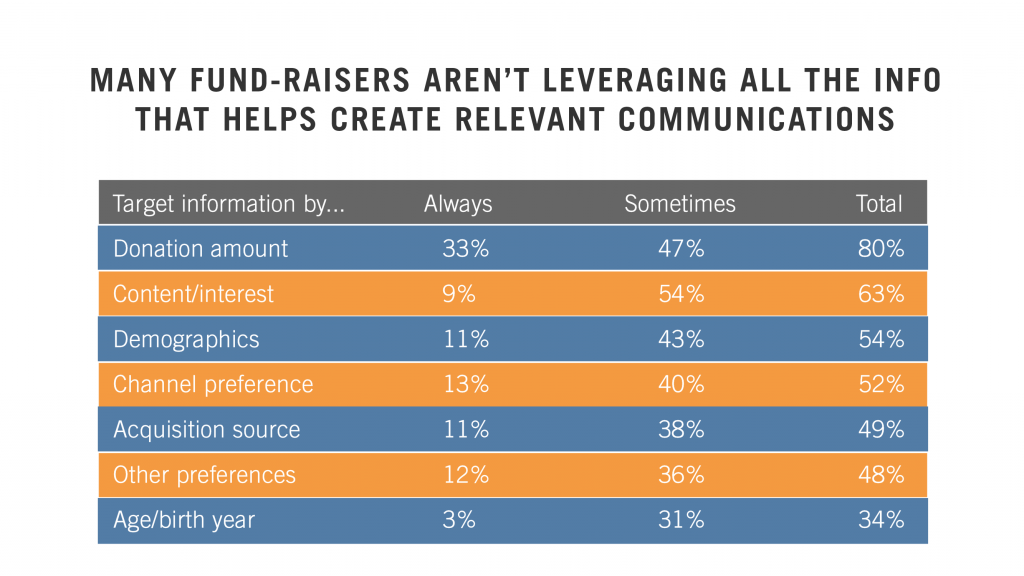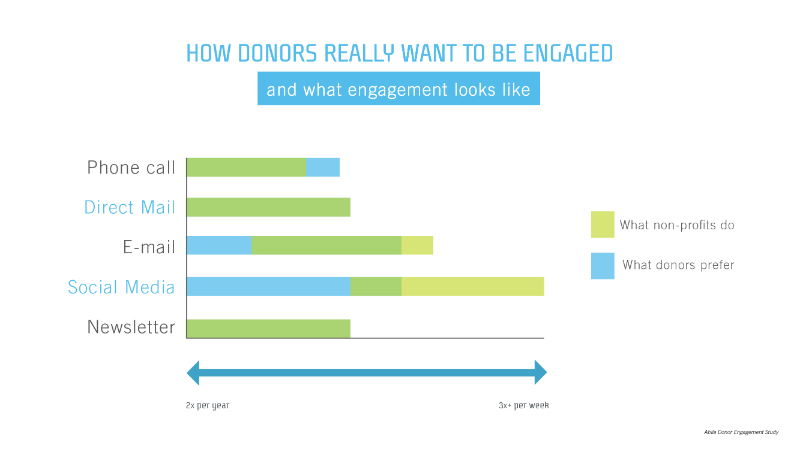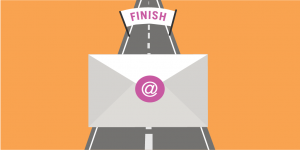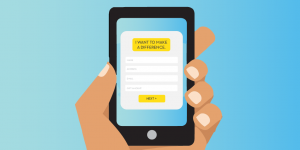Fundraising organizations tend to struggle with two things when it comes to their communications: over soliciting and over-sending. The result of sending out appeals and communicating too much is audience disenchantment. There are a lot of things that fundraisers and nonprofit marketers have to keep in check while communicating with the various subsets of their constituency: balancing messages of solicitation and stewardship, message relevancy and frequency, and audience preference.
With so many people on your lists, it may seem incredibly difficult to get it just right for everyone. The truth is that nothing is ever going to be perfect, but with a little hard work and consideration you’ll start to move in the right direction. The most effective way to lead your audiences down the path to an eventual donation is to cultivate a relationship that keeps them meaningfully connected to you and your organization, and in order to do so you must master the balancing act of communicating appropriately and consistently.
Don your lab coat, it’s time to become a data scientist.
If we’ve said it once, we’ve said it a thousand times: you have more data than you think. The first step to changing the communications game is to get to know your audience as well as you can. Mining your databases is a critical step to determining what your constituents want to hear about, how often they want to hear from you, and in what ways to they want to get their information. Utilize surveys, social media metrics, website analytics and email engagement reports to help shape your findings. If you’re particularly active on social media, see what you can glean from the comments on your posts. Review archived posts that were uniquely tagged to see what people are saying about you. Demographic information can also be leveraged to help you better allocate your marketing budget toward geographic areas and channels that are most likely to yield the highest return, thus increasing the value of your investment.
Relevance is the other key part of this. When coupled with constituency segments, existing data like gift history, board member affiliations, programmatic areas of interest, and how you know them can be used to shape your content so that you can tailor messaging in a way so that it resonates most highly with whomever you’re communicating.
In a recent study by Abila on donor engagement, we get a better look at how what most non-profits do in terms of communication against how surveyed donors actually want to be contacted:
The balancing act of solicitation and stewardship.
It’s not easy to balance the competing priorities within a development office. Building relationships with prospects and donors is an important part of securing a gift, and it’s a lot easier to always be out on the hunt than figuring out how to keep the conversation going. Enter stewardship. Stewarding donors and prospects who are interested but just aren’t ready requires a lot of effort on the part of the fundraiser.
One of the most important steps before you make the ask is to listen actively. Fundraising is a bit like match-making. It’s important that donors’ interests are matched to the needs of their community and the organizations that serve them. The only way to do this successfully is to ask the right questions and listen to what they have to say. Lasting donor relationships are built on shared values and common goals. Without this mutual interest, donors will lapse.
Conversely, too often organizations will bend themselves to fit the desires of someone holding the purse strings, and that’s not a good position to be in. You have to know when someone is a good fit for your organization, so there is a mutual benefit to listening and putting in the leg work.
The Wrap Up
When you’re planning out your fundraising for the year, put the same amount of effort that goes into crafting your appeals into developing thoughtful and effective stewardship tools. Going beyond digital and print communications, identify appropriate opportunities to reach out by phone or in person. A well-rounded strategy to keep people engaged will result in a longer lasting relationship that yields both increased gifts and service over time.
You Might Also Enjoy:
+ Before You Make the Ask: Listen Actively
+ 4 Keys to Meaningful Donor Stewardship
+ Hidden Opportunities: A Chat with Laura Fredricks
Like what you see? Stay in touch!














